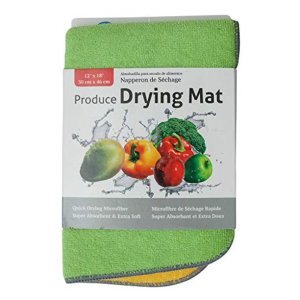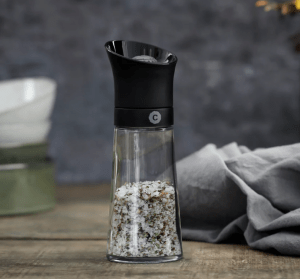Laura K. Curtis's Blog
September 13, 2024
Goat Cheese & Spinach Quiche
I love quiche. Love it. Always have. Pretty much any flavor works for me from the most traditional Lorraine to the least traditional butternut squash. I saw a quiche like this at a market and knew I had to make one myself. It turned out even better than I could have hoped!
deep dish or roll-out pie crust5 eggs1 cup whole milk1/ 4 teaspoon salt1/8 teaspoon ground white pepperpinch ground nutmeg2.5 ounces baby spinach, sliced6 ounces fire roasted red peppers, drained and dried with a paper towel then chopped. Make sure to drain the liquid from the peppers completely and pat them dry with a paper towel1/3 cup green onion sliced4 ounces goat cheese, crumbled1 ounce Gruyere cheese, grated
 Cook crust according to package directions, then remove from oven and cover crust edges with tinfoil or a crust protector to stop them from burning. Reduce oven heat to 355.During the cooking of the crust, whisk together the eggs, milk, salt, pepper, and nutmeg in a large bowl. Then mix in the spinach, red peppers, goat cheese, Gruyere, and green onion. Pour into pie shell.Bake for 60 minutes.
Cook crust according to package directions, then remove from oven and cover crust edges with tinfoil or a crust protector to stop them from burning. Reduce oven heat to 355.During the cooking of the crust, whisk together the eggs, milk, salt, pepper, and nutmeg in a large bowl. Then mix in the spinach, red peppers, goat cheese, Gruyere, and green onion. Pour into pie shell.Bake for 60 minutes.
May 19, 2023
Mushroom Bourguignon (Vegan)
 Ingredients:Olive oil2 pounds mushrooms
Ingredients:Olive oil2 pounds mushroomsI use 1 pound Baby Bellas with the stems popped off and the caps cut into quarters, .75 pound Shiitakes with the stems cut off and the caps cut into 1-inch pieces, and the rest made up of whatever looks good, cut into approximately 1” pieces1/2 pound peeled pearl onions
You can find these in the freezer section of most grocery stores, but it’s better to use fresh ones if you can get them because you can cut them in half, which makes eating easier.1 large leek, white & light green parts, diced
Leeks grow in a way that traps dirt, so first dice ( https://feelgoodfoodie.net/recipe/how...) , then put the pieces in a sieve and rinse well.4 carrots, cut in half-inch rounds (If you’re using the thick, heavy carrots, use 3—this is to taste.)3 garlic cloves, minced3 Tablespoons all-purpose flour2 cups mushroom broth (or vegetable broth—I like to keep “Better than Bullion” around and they recently came out with a mushroom version)2 cups red wineSoy sauce or Tamari3 large fresh thyme sprigs or 1 teaspoon dried thymeHerbs and spices to taste (see above for my favorites)
Step 1:
Mix together mushroom pieces and onions in a large bowl.
Put 1 Tbs (hereafter, a “glug”) olive oil in dutch oven, and heat. Add 1/3 of mushroom mixture into dutch oven and turn heat to medium-high. Add a second glug of olive oil and stir, then leave alone for about 5 minutes. You want the mushrooms to get a hard sear on one side, as you would meat. Once browned on one side, stir and leave for another 3 minutes, until fully browned. Remove to a medium sized bowl.
Repeat with other 2 thirds of the mushroom mixture. Turn off heat while you remove the last third of mushrooms to bowl.
Step 2:
Add another Tbs of oil to dutch oven and turn the heat to medium-low, then add leeks and carrots and sauté, stirring occasionally, for about 5 minutes, until leeks are soft. Add the garlic and stir for 1 minute (you don’t want to burn it!). Add tomato paste and stir. Sprinkle flour over mixture and stir for one minute. Add wine, broth, soy sauce, and thyme. Cook, stirring and scraping up delicious brown bits on bottom of the pot, until smooth.
Step 3:
Add mushroom mixture back to the pot and bring to a boil. Taste and add any additional herbs/spices/salt/pepper you like. Then lower heat to a simmer, cover partially, and simmer 30-45 minutes, until alcohol sharpness is gone and sauce has thickened into a nice gravy instead a liquid. Serve over egg noodles, rice, or polenta.
November 25, 2022
Ideas for the New Cooks Among Your Friends
During Covid, many people started cooking. Some of it was boredom–they were stuck at home–and some was desperation–they lived in places where restaurants closed entirely, or where there simply wasn’t a range of foods to pick up. I love to bake, but I’m not much of an everyday cook, so when we got tired of the limited choices around us, my husband and I tried out Hello Fresh (I’d recommend it on the whole). Anyway, I got to talking to some friends about the things we find most useful in our kitchens and it occurred to me that now that people are getting together again, it might be fun to consider possible host gifts for your friends who’ve gotten into cooking recently.
 The Jacent Produce Drying Mat is definitely the least expensive of the things I use every single day in my kitchen. I got my first one because when we started with Hello Fresh, I was washing so much produce and nothing was really helping. Cotton cloths didn’t absorb enough and paper towels are wasteful. Now I have a few of them so that if one or two are dirty I still have one ready for use. They actually work better after they’ve been washed and dried, though you shouldn’t use fabric softener on them (it leaves a film that you don’t want on your produce). I use wool dryer balls with a few drops of essential oils on them instead.
The Jacent Produce Drying Mat is definitely the least expensive of the things I use every single day in my kitchen. I got my first one because when we started with Hello Fresh, I was washing so much produce and nothing was really helping. Cotton cloths didn’t absorb enough and paper towels are wasteful. Now I have a few of them so that if one or two are dirty I still have one ready for use. They actually work better after they’ve been washed and dried, though you shouldn’t use fabric softener on them (it leaves a film that you don’t want on your produce). I use wool dryer balls with a few drops of essential oils on them instead.
 Mepal Prep Bowls. I can hear you now. “Prep bowls? Are you seriously recommending I buy prep bowls as a host gift?” Well, in a word, yes. Of course, you can fill them with something to make them more festive (like some yummy goodies from nuts.com), but if you’re not up for that, these babies are still super useful. Until you start cooking, you have no idea how a bit of sauce can change an entire dish. Bored with your everyday quesadillas? Try adding a little avocado lime crema. All you need is sour cream, avocado, and lime juice. And, of course, a little bowl to mix them in. Or maybe you just want to sit on the couch with some fresh vegetables in a little bowl and some ranch dip in another. Or, hey, maybe you’re trying to limit your ice cream intake to less than a gallon a sitting (what? just me?) and you need a smaller bowl than you’ve been using. You could even portion out the ice cream in advance since these are freezer safe. (They’re also dishwasher safe, and the bottoms are microwave safe.)
Mepal Prep Bowls. I can hear you now. “Prep bowls? Are you seriously recommending I buy prep bowls as a host gift?” Well, in a word, yes. Of course, you can fill them with something to make them more festive (like some yummy goodies from nuts.com), but if you’re not up for that, these babies are still super useful. Until you start cooking, you have no idea how a bit of sauce can change an entire dish. Bored with your everyday quesadillas? Try adding a little avocado lime crema. All you need is sour cream, avocado, and lime juice. And, of course, a little bowl to mix them in. Or maybe you just want to sit on the couch with some fresh vegetables in a little bowl and some ranch dip in another. Or, hey, maybe you’re trying to limit your ice cream intake to less than a gallon a sitting (what? just me?) and you need a smaller bowl than you’ve been using. You could even portion out the ice cream in advance since these are freezer safe. (They’re also dishwasher safe, and the bottoms are microwave safe.)
 Spice grinders also make great presents. I got mine locally, and I have the Crushgrind model pictured here. I tried to find it online, but no US stores seem to sell it online. It’s readily available in the UK and on ebay in the US. But you don’t need this model. There are a few key things you want in a spice grinder: a glass body (the oils from certain spices will damage a plastic body) and an adjustable, ceramic burr. The ceramic burr will not collect odors or flavors when you want to switch spices, and like coffee, you’ll want to adjust the grind on various spices for different applications. I don’t like electric grinders because of the waste caused by the batteries. Also, you don’t want your grinder dying at that critical moment!
Spice grinders also make great presents. I got mine locally, and I have the Crushgrind model pictured here. I tried to find it online, but no US stores seem to sell it online. It’s readily available in the UK and on ebay in the US. But you don’t need this model. There are a few key things you want in a spice grinder: a glass body (the oils from certain spices will damage a plastic body) and an adjustable, ceramic burr. The ceramic burr will not collect odors or flavors when you want to switch spices, and like coffee, you’ll want to adjust the grind on various spices for different applications. I don’t like electric grinders because of the waste caused by the batteries. Also, you don’t want your grinder dying at that critical moment!
You can go totally manual, of course, and get a mortar and pestle, though I find those hard to handle for single spices. (They can’t be beat for making pastes, however.) If you do decide to go that route, be sure to get one with a rough finish rather than a smooth one, or you may find your cloves or peppercorns flying around the kitchen.
Speaking of spices, if your friends want to try some new tastes, why not give them a Penzey’s gift box? I love the Sunny Paris, which is especially good if people are looking to avoid salt in their diets but want to amp up the flavor. My mother’s favorite is Fox Point. But they also sell “normal” spices, and have boxes for bakers, etc.
 A number of people got into baking during the pandemic, and one of the things I always recommend for bakers is silicone baking mats. For years, I’ve used Silpat mats, but for beginning bakers, I love the fact that this Five Two Silicone Baking Mat is gridded out so they can see how big everything is, or if a recipe says “leave at least 2 inches between cookies,” they can get a sense of what that means. It can also be cut to fit if your baking sheets are on the small size.
A number of people got into baking during the pandemic, and one of the things I always recommend for bakers is silicone baking mats. For years, I’ve used Silpat mats, but for beginning bakers, I love the fact that this Five Two Silicone Baking Mat is gridded out so they can see how big everything is, or if a recipe says “leave at least 2 inches between cookies,” they can get a sense of what that means. It can also be cut to fit if your baking sheets are on the small size.
On the topic of cookies, one kitchen essential that most people don’t have is an oven thermometer. This doesn’t need to be anything fancy, but it’s remarkable how few people’s ovens actually cook at the temperature that they set it for. I see it all the time when I watch cooking shows and contestants are shocked that their food is cooking way too slowly. Chances are, their home ovens are set too high. So they put their food on at 350 and their food is actually cooking at 370. Then when they get to the competition and their food is really going at 350, it seems painfully slow.
 Cast iron. I’m not going to tell you which cast iron to get, but if your friends don’t have any and you want to get them something truly exceptional, that’s the thing I’d recommend. There are three major types (and they all have their uses and they’re all equally expensive): Cast iron with a smooth ceramic coating inside and out, like Le Creuset. Cast iron with a smooth ceramic coating outside and a matte finish inside, like Staub, or straight up cast iron, like Smithey.
Cast iron. I’m not going to tell you which cast iron to get, but if your friends don’t have any and you want to get them something truly exceptional, that’s the thing I’d recommend. There are three major types (and they all have their uses and they’re all equally expensive): Cast iron with a smooth ceramic coating inside and out, like Le Creuset. Cast iron with a smooth ceramic coating outside and a matte finish inside, like Staub, or straight up cast iron, like Smithey.
Tomatoes will destroy the inside of a cast iron pot unless it has a finish on it, which is why you often see the Le Creuset Dutch ovens. Also because they’re smooth, they’re great for baking bread. On the other hand, you don’t want that smooth finish if you’re cooking meat in a cast iron pan, or you won’t get the texture and bite you’re looking for, so for that you want a Staub or Smithey style. But if someone in your house leaves pans to soak or likes to put them in the dishwasher, you do not want the straight cast iron. It will rust. Which explains why I only have one Smithey pan and I TREASURE it. It is the #10 skillet, and it’s my cornbread pan. It gets used, washed, and put away. And no one else even knows where it lives.
So there you are. My kitchen essentials that your friends may not have yet!
October 28, 2022
The Gothic in (Literary) History

When you think of the term “Gothic,” I’m willing to bet that a very specific image comes to mind: an ancient, ruined castle. Perhaps it is shrouded in mist. Perhaps there is a single light in a window high up in the structure. Perhaps there is a woman fleeing in the night. Usually in her nightgown, however impractical such a thing might be.
While the ruined castle is the most common trope in Gothic literature, it is certainly not the only one. Over and over in such narratives, one runs across
• An ancient/old/abandoned/creepy house or castle
• Pervasive mood of gloom and dread in the language (in this, the house personifies the mood)
• Isolation
• Liminality and madness – questions of what is real versus what is imaginary, are people/things alive or dead?
• The constant presence of threat, either supernatural or appearing to be supernatural
• Doubling – twins, lookalikes, mirrors
• Incest/swapped children/illegitimacy/inheritance
• Orphans and dead families in general
• Claustrophobic writing (frequent crypts)
• Religion (often, religious figures are portrayed as evil)
Looking at that list, you might think “how could a genre so filled with unpleasantness possibly survive?” But survive it has. In fact, it has thrived, for nearly 300 years. Many of the foundational tropes seem overblown to a modern reader, but several of them would have resonated in a completely different way with an audience in both Britain and Europe, who’d seen a “divinely anointed” King beheaded in 1649.
Previous to that, the Divine Right of Kings was almost unquestioned, and it wasn’t as if simply executing a king quelled the royalists who believed Charles to have been their anointed leader. Even those who believed they’d been right in executing Charles could not deny the condemnation it brought from all corners of Europe. And given that “nature abhors a vacuum,” it is no surprise that no sooner was the throne empty that squabbles (and wars) arose about who would next get to sit there—which gives the modern reader some sense of why inheritance, legitimacy, religion, and constant uneasiness show up in so much work of the mid-17th Century on.
The first acknowledged gothic novel written in English was The Castle of Otranto by Horace Walpole, published in 1764. Walpole himself seems to have ambiguous feelings about the work, as he first claimed it was a recovered manuscript, translated from the Italian, written in 1529. The story itself, he claimed in the person of the “translator,” appeared to go back to the Crusades.
In the second edition, where he titled it “a gothic story,” he acknowledged that he wrote it. The first edition received critical praise while the second edition was panned, likely because the very same elements that the reviewers found intriguing in when written in the 11th C (see list above with the additions of divorce, bigamy, and rape) were repulsive or immoral to them in a contemporary story. Especially since Walpole also claimed that it was all a big joke, a satire, and they’d all been fooled. Which says rather more about the critics than about the story, IMHO.
To read much about Walpole is to know that it is possible the whole thing was a giant hoax to him (he was fond of poking fun at his contemporaries), but that he was also serious about those few things to which he applied himself. One cannot imagine that he intended the novel to be dismissed so easily. Rather, it is the finest type of satire, a perfect paean to what is being satirized, so well-done as to function both as satire and as its own object.
A short thirty years later, in 1794, Ann Radcliffe published the first gothic romance, The Mysteries of Udolfo. It contained all the foundational tropes, along with fear of the foreign. The heroine and her allies are pursued by evil Italians and Frenchmen. But in the end, this is a romance, and she and her lover are united.
In 1818, Mary Shelley added her own touch to the genre and became known as the first author of horror. Despite the shambling monster in Frankenstein, or The Modern Prometheus, this is still a gothic. After all, at the heart of the novel is the question of what it means to be alive and to be sane. Is the monster truly alive? Can anyone who decides to stitch together dead bodies and try to bring the product to life sane? There’s the ancient building, the liminality of all the characters, who are outcasts from society.
As a past president of the NY chapter of the Mystery Writers of America, I cannot let any discussion of the gothic go without mentioning Edgar Allan Poe’s The Fall of the House of Usher. Published in 1839, it hits every single gothic trope.
• An unnamed narrator about whom we know virtually nothing. Nothing outside the story at all, really.
• Creepy place: Ancient, mysterious house, fully equipped with a crypt and a mysterious crack that runs down the side, though it doesn’t seem to be affecting the stability of the building
• Isolation: The house is isolated, but so is Roderick Usher. His sister Madeline drifts through in a ghostly moment, but is not properly seen until she may be dead, and there are no servants about.
• Liminality and madness & the constant presence of threat: Nothing is real, the entire place seems to exist within a dream. The narrator talks about his own increasing discomfort as well as Roderick’s, but with no known cause. And Madeline—is she alive or is she dead?
• Doubling: Roderick’s sister is his twin and the narrator remarks on this. Both sicken at the same time and continue to worsen through the narrative.
• Incest/swapped children/illegitimacy: The relationship between Roderick and his sister is peculiar. Is it incestuous? Hard to tell. Certainly, neither of them is particularly interested in outside relationships and Roderick’s invitation to his old school friend is more akin to that from one who fears a spouse’s death than one who fears a sibling’s death. Still, even if we only stick to their relationship being that of unusually close twins, the relationship is odd and lends an unsavory edge to the narrative. Roderick knows that he is the last of his line. Roderick tells the narrator that he believes the house itself (much like Shirley Jackson’s Hill House) is responsible for dooming them, though he does not explain why it should want to visit this doom upon his particular generation.
• Orphans/dead families: The once-great House of Usher has come to the end of its line
• Pervasive mood of gloom and dread: well, yes.
• Claustrophobic setting and writing: the narrative gets smaller and smaller, beginning outside, when there is still a chance of “escape” as it were, right down into the crypt and then into Roderick’s bedroom.
At the end, the House of Usher falls literally as well as figuratively. It splits in two along the seemingly innocent crack the narrator noticed upon his arrival.
There are a host of novels, novellas, and short stories that follow before the end of the 19th Century. I am not going to say much about them, but I am going to mention several in case you’re interested.
1847: Both Jane Eyre (Charlotte Brontë) and Wuthering Heights (Emily Brontë)
1859: The Woman in White by Wilkie Collins – misses some of the tropes, but hits the mood, the questions of sanity and reality. This is sometimes called the first true mystery novel.
1886: The Strange Case of Dr Jekyll and Mr Hyde by Robert Louis Stevenson – the doubling in this could not be more obvious
1891: The Picture of Dorian Gray by Oscar Wilde
1897: Dracula by Bram Stoker
1898: The Turn of the Screw by Henry James – takes questions of reality to whole new levels
1938: Rebecca by Daphne du Maurier – never, in my presence, refer to this as a gothic romance. It is a straight-up gothic. Anyone who believes there’s a happy ending has a very strange idea of happiness.
1959: The Haunting of Hill House by Shirley Jackson (or, really anything she wrote. We Have Always Lived in the Castle is another favorite.)
In the 1960s, the popularity of the modern pulp “gothic romance” exploded. Every major publisher had an imprint devoted to them. If you want to get a taste, you can still buy the most popular of these in ebook form. True, the genre got up a bit for modern audiences, with less incest and fewer religious figures (who, after all, no longer carried the same resonances). Check out Mary Stewart, Victoria Holt, or Phyllis A. Whitney for a taste of what made these novels so appealing to readers.
The heroines, because they were all heroines, found themselves in situations readers recognized. In the America of the 1950s, women could not open bank accounts without men’s aid. They couldn’t get credit cards. Their work was undervalued. They lived on the edges of society, trying to survive without a safety net. Dependent on the good will of others, they recognized the desperation of the heroines.
At some point, the term “gothic” fell out of use and was replaced with “domestic suspense.” Domestic suspense often has even less incest, and religion than the gothic romance pulps of the mid-20th Century. But the claustrophobia, doom, doubling and isolation remain.
And, if I am lucky, they always will.
October 19, 2022
Ghosts and Ghouls and Gothics

My favorite time of year is here! Time for spooky stories and scary movies. Time for cozy fires and falling leaves. There are certain stories I read every year around this time: Something by Shirley Jackson (usually The Haunting of Hill House) and something by Mary Stewart (either Nine Coaches Waiting or This Rough Magic). This year I am also rereading Lost Among The Living by Simone St. James and Named of the Dragon by Susanna Kearsley.
What do all these books have in common? They’re all gothics of one sort or another. A few nights ago, I went to hear John Connolly speak about—among other things—the history of Irish fiction. One person in the audience asked what exactly constituted a gothic. The concensus was “it has to have an ancient, ruined castle.”
I tell you, my friends, I had to grit my teeth. Sure, the ruins are part of it. But only a tiny, tiny part. I came home and started writing my thoughts and as it turns out, I have many. Many.
I have given talks on the history of the gothic. But the history is so rich, so complicated, that I had written only 1,500 words when I thought “oh, crap. This is way too long for a blong post. But if you’re interested in such things, next week the post will be up. All 1,500+ words of it.
August 14, 2020
Voting in the Postal Crisis: You Can Do It
 Two things are being conflated in America today: VBM (vote by mail) and the the destruction of the United States Postal Service. Yes, the two are definitely linked. But the fact is that the GOP has been trying to “privatize” the USPS for decades. The USPS is mandated by the Constitution, so they can’t actually dissolve it, but it is a service that serves a group of people they don’t particularly respect—the poor, the rural, the elderly and it puts no money into the pockets of the politicians.
Two things are being conflated in America today: VBM (vote by mail) and the the destruction of the United States Postal Service. Yes, the two are definitely linked. But the fact is that the GOP has been trying to “privatize” the USPS for decades. The USPS is mandated by the Constitution, so they can’t actually dissolve it, but it is a service that serves a group of people they don’t particularly respect—the poor, the rural, the elderly and it puts no money into the pockets of the politicians.
Social Security checks come via USPS. The VA sends out medication via USPS. The mandate for the USPS is to deliver everywhere, which let me tell you, UPS and FedEx most certainly do not. And they do it cheaply, which is why those other companies use the USPS for “last mile delivery.” The vast majority of small businesses use USPS to ship to their customers.
So let’s pretend, just for a minute, that the crisis we see playing out right now in the USPS happened in a year that was not a critical election year. It would still be completely and utterly unacceptable. People’s rent checks would still be late. Their medications would not be arriving. Their bills would be late getting to them, and late getting paid. It’s tempting when we try to talk to people about the USPS to lean heavily on VBM as the reason it’s so important, especially during a pandemic and a general breakdown of a democracy. But there are ways around that (I’m about to talk about them) and if destroying the USPS is seen as entirely partisan because of VBM, nothing will get fixed. Meanwhile fixing the USPS fixes not only VBM, but everything else the USPS does.
If you are experiencing issues with your mail, I recommend going to https://www.uspsoig.gov/form/file-onl... and reporting Louis DeJoy for Employee Misconduct. The OIG is currently investigating him, so the more reports they get, the better. The two statutes he has broken (the grounds for misconduct) are:
1) 18 U.S. Code § 1701 (obstructing/slowing mail)
2) 18 U.S.C. § 208 Conflict of Interest due to his owning $30 million in XPO Logistics, a contractor of the USPS.
Now, what to do about voting in an era where your ballot may never show up if you use the USPS to send it in? [Please note: this information is current to the best of my knowledge as of the date of this post. For more, including what you have to actually sign and mail in with your ballot if you’re voting by mail in various states, see: https://projects.fivethirtyeight.com/how-to-vote-2020/ ]
The following states have drop boxes (NOT MAIL BOXES) where you can drop completed ballots:
Alabama, Alaska, Arizona
California, Colorado, Delaware
Florida, Georgia, Hawaii
Kansas, Maryland, Massachusetts
Michigan, Montana, Nebraska
Nevada, New Mexico, Ohio
Oregon, Utah, Washington
Nevada, New Jersey, Wisconsin
The GOP is currently suing Pennsylvania over the use of boxes, so they may or may not have them. Frankly, I wouldn’t trust them. Pennsylvania is a swing state, so if the Trump campaign decides to contest the election, it may be based on those. They may try to force votes dropped in boxes not to count. We need to win without those votes. So if you want to do this, apply for an mail-in ballot, fill it out, and hand it in in person at your local board of elections. If they say they want you to drop it in a box, tell them you’d rather not, that their own site said you should hand it in. (It does: https://www.votespa.com/Voting-in-PA/Pages/Mail-and-Absentee-Ballot.aspx )
What happens if you request an absentee/VBM ballot, and you don’t get it in time? Call your state board of elections and ask where you can go to get one printed out that you can fill out on the spot, sign the security envelope, and hand in. This will often be in your city hall or county courthouse. You can find a list of the numbers for every state here: https://www.eac.gov/voters/election-day-contact-information . (It’s actually a really useful site to go to and familiarize yourself with what the current rules are for your state.) Once they tell you where to go, CALL THAT OFFICE and tell them you’re coming. This is government, you know, where the right hand often has no idea what the left is doing. This will prevent you waiting for hours while they try to figure out how to print a ballot for you.
Well, okay, but what about all those states that don’t have drop boxes? Or what if you’d prefer to hand your ballot to a person? First, see if your state allows early voting. The following states allow early voting using whatever their standard method is (ie: in NY, they use electronic voting at specified locations, in California they use drop boxes/election offices):
Alaska, Arizona, Arkansas,
California, Georgia, Florida,
Illinois, Louisiana, Massachusetts,
Nebraska, New Mexico, New York,
Nevada, North Carolina, North Dakota,
Tennessee, Texas, Washington DC, West Virginia
In addition to the above, the following states allow you to do “in person absentee,” where you fill out your absentee paper ballot, and then put it into the security envelope and hand it to a designated human who will check your security envelope signature (and, in some states, if they don’t have a pollbook handy, your ID)
Idaho, Indiana, Iowa,
Kansas, Maine, Michigan,
Minnesota, Montana, New Jersey,
Ohio, Oklahoma, South Dakota,
Vermont, Virginia, Wisconsin, Wyoming
Again, check the website for your state election information to see the exact rules and requirements. https://www.eac.gov/voters/election-day-contact-information
The best kind of voting is hand marked paper ballots which is one reason everyone is encouraged to apply for an absentee/mail-in ballot. This is because purely electronic voting leaves no paper trail. If machines are hackable (as they are, according to the manufacturer themselves, in Florida, Michigan, and Wisconsin, all battleground states), or if they malfunction, there is no way to have a recount. Voting with a hand-marked paper ballot also means that if you show up at the polls on Election Day with your ballot already filled out (ie: in person absentee, but not early) only to find that for some reason your polling place’s electricity is not functioning, or their internet connection is down, you can still vote.
Request/download a sample ballot as soon as they become available. Fill out your sample ballot. Compare your sample ballot to the ballot you get whenever/wherever you vote. Don’t assume that just because one party’s candidate come first on the sample ballot they’ll come first on the actual ballot. Don’t assume that the parties won’t be flipped in position on the back of your ballot. Take your time. There’s no rush. Fill out your hand-marked ballot (or, if you must, electronic ballot) slowly and carefully to be sure there are no shenanigans.
Let me double back for one second to voting early. Our voting procedure depends heavily on a volunteer force composed primarily of the elderly. They won’t be able to work the polls in the face of COVID. Lines will be excruciatingly long on Election Day, which is another reason to vote early. Also, voting early means that if there’s an issue “oh, I don’t think this looks like your signature” or “do you have a mailing address in our district?” You have time to straighten it out. We want to make this clean and clear with as few provisional ballots as necessary.
Now, sometimes, none of that stuff is available. I know you match my commitment to vote no matter what. So here’s my advice. Check out sales for camp chairs. Bring at least one (more if you’ve got them for the other folks who will be in line). Bring bottled water. Bring warm clothes. Stock up on protective gear—got an N95 mask? That’s the day you want to use it. Assume that they are going to challenge you at the polls if your state is in play. Bring your ID. Bring proof of residency. You shouldn’t have to, but if there is one thing we’ve learned with this administration, it’s that “should” does not apply to them.
Okay, I know that was a lot to take in. I’ll have more at some point, but right now, take care of yourself, and check now to be sure that
1) You are still registered and haven’t been purged from the rolls (You can find out at https://www.vote.org)
2) You’ve requested an absentee or mail-in ballot (some states differentiate). Now is the time to get started. You can find links to request VBM/absentee ballots for your state at https://projects.fivethirtyeight.com/...
February 9, 2020
What I Believe
 The other day, I had a panic attack. I’ve had them on and off for years, but they are mostly under control. This one came out of the blue and I had a hard time figuring out what triggered it. I mean, there’s the obvious—politics—and the other obvious—grief—but it happened midday without any noticeable difference from what came before.
The other day, I had a panic attack. I’ve had them on and off for years, but they are mostly under control. This one came out of the blue and I had a hard time figuring out what triggered it. I mean, there’s the obvious—politics—and the other obvious—grief—but it happened midday without any noticeable difference from what came before.
So I went back to the basics. Breathing. Centering. Grounding. Instead of thinking about what you can’t do, think about what you can do. If you’ve never been though therapy, that sounds like so much hokum, but it’s like muscle memory—you practice until it’s automatic, until you can summon it when you need it.
It made me think about what I could do. Politics? Not much. Grief? Even less. So I had to dig deeper. What are the beliefs I hold truest and how can I move them forward? I already donate money to candidates who advance my personal agenda. As some folks who know me know, I also advance some of my beliefs privately, by reaching out where I can help. But I am looking for other ways and I am writing this here on my blog so I can return to it when the next panic attack comes and I can re-read it and see what I’ve done and come up with new ideas.
I believe:
That most hatred is born of fear and ignorance.
That those who benefit most from a system are morally (and should be legally) obligated to give a leg up to those who are disenfranchised by that system
That governments should protect citizens—all citizens—to the greatest extent possible
That the purpose of government is to prevent chaos in society and to raise the standard of living for its citizens and that laws should be formed and adjusted accordingly; if a law no longer serves that purpose, it should be removed and if proof cannot be brought that it serves that purpose it should not be enacted. (For exampe: the law against murder fits the bill—if we all went around murdering each other, we’d have no society. A law against drinking coffee in public probably would not make the grade.)
That with great power comes great responsibility (sorry, couldn’t resist)
That capitalism requires regulation and oversight, but it’s the best overall system
That every person has the right to live—and die—as they please, as long as by doing so they are not hurting others (see #3 & #4)
That no one should have to worry about where their next meal is coming from
That everyone should be able to access the healthcare they need
That more people should be willing to admit when they don’t know something (me included!) and conversely,
That the fear of not understanding things accounts for a lot of wacky explanations and conspiracy theories
That the best hope for all of the above is education, both formal and informal, and exposure to a wide range of ideas and people.
June 1, 2019
All the President’s…People
 We have a long way to go before we even hit the primaries for the 2020 election and I have by no means decided who I think the best choice is to patch this leaky boat we are sharing in the rough sea. But while all candidates are prone to making radical promises, and while most of us take those promises with a grain of salt and understand that they may not be able to fulfill them all, there are a few things that tend to get lost in the noise and one of them I would like to take a minute to talk about.
We have a long way to go before we even hit the primaries for the 2020 election and I have by no means decided who I think the best choice is to patch this leaky boat we are sharing in the rough sea. But while all candidates are prone to making radical promises, and while most of us take those promises with a grain of salt and understand that they may not be able to fulfill them all, there are a few things that tend to get lost in the noise and one of them I would like to take a minute to talk about.
When candidates promise big things (universal healthcare, higher wages, gun control, raising educational standards, a stronger economy, cleaner air and water…) you have to really dig into their websites or other literature to find out two things: how they plan to pay for them and who they plan to institute any new policies. Currently, we live in an autocracy where we are governed by fiat (“executive order”) but we are supposed to be a democracy. This is a culmination–we’ve been edging closer to this year after year and now we are fully involved. (Look at the differences–not in number, but in type, between Executive Orders from Reagan and those from Trump.) We cannot simply govern that way for another cycle or people will begin to accept it.
If there’s no legitimate way to pay for a plan on a candidate’s website, ask about it. If they can’t answer, move on to the next candidate. The same is true if the plan is “close a tax loophole that has existed for 25 years and for 15 of those people have been trying to close it.” A president can impose a new tax–as we’ve all seen–but even that is unusual. Usually, you’re talking about restructuring the budget in one way or another. (For what’s within a president’s power, see The President’s Power To Tax.) If you want something to last, and not be undone by the next guy who comes along, you do it the right way.
But beyond that, I want to talk about something our current regime leader said when he was campaigning. He said he knew “all the best people.” Well, as it turns out, he doesn’t seem to know anyone except greedy and corrupt narcissists. People who are willing to destroy whatever he puts them in charge of to line their own pockets. An oil man in charge of the EPA. DeVos in charge of education. Carson in charge of HUD. These are the kind of people he has associated with all his life–the greedy and corrupt, who stepped on others. He was brought up that way. “As long as I’ve got mine, you can literally go die. Decrease the excess population.”
We all focus on the fact that a president is going to be able to fill SCOTUS seats. And so we should. We should ask who s/he would fill them with as part of our decision-making process. But we should also ask ourselves how much experience they have with budgeting, diplomacy, and government. And above all, what does their network look like?
There has been a SIXTY-EIGHT PERCENT turnover in less than three years in the top-level cabinet. And we won’t even talk about the state department which is so badly understaffed that they cannot insure the security of foreign service employees, let alone the fact that we are missing vital ambassadors and the current administration says they have no plans to fill those positions. OK, I guess I was wrong. We talked about it.
Who would your candidate choose to head the EPA? The Department of the Interior? Department of State? DHHS? Department of Energy? Department of Justice? The Department of Education? Does s/he have a wide advisory circle who could to help them fill empty positions and supply information on things outside their own experience? Is s/he willing to understand that the president’s job is about coordinating a massive bureaucracy and that most of the real decision-making isn’t their own job?
Things to think about in the months before you have to make a decision.
March 29, 2019
Instant Pot Brisket, It’s What’s For Comfort
A s some of you may know, it’s been a tough month. I found out that I have to do some medication tweaking for my epilepsy and probably some dietary tweaking as well. Both my father-in-law and my uncle died within 48 hours.
s some of you may know, it’s been a tough month. I found out that I have to do some medication tweaking for my epilepsy and probably some dietary tweaking as well. Both my father-in-law and my uncle died within 48 hours.
So, being a good Jewish girl, I decided what I needed was brisket. Back in the day when I had a standard pressure cooker I made brisket fairly regularly. I was a go-to. But then I got married to a vegetarian, and eventually my pressure cooker (which was only being used for beans) died.
People told me to get an Instant Pot. I hemmed, I hawed, I changed my mind a bunch. But I decided to get one. Tonight, in need of comfort (and keeping in mind that my husband now occasionally does eat meat), I decided to update my recipe.
This isn’t a traditional brisket recipe by any means. It has a heavier gravy than most briskets. But I think it’s delicious. I cook the meat the day before, then let it sit in the gravy overnight in the fridge before serving with pearl onions, string beans, and either noodles or mashed potatoes.
3 lbs.brisket
2 tablespoons tomato paste
1 large onion, chopped
3 large carrots, chopped
1 stalk celery, chopped
6 cloves garlic, chopped
2 sprigs fresh rosemary, chopped
1 tablespoon herbs de Provence
2.5 cups red wine, separated
1.5 cups beef broth
salt and pepper to season
1 box Pacific condensed cream of mushroom soup
1 tablespoon cornstarch
vegetable oil to sear the meat
1. Dry the meat with a paper towel and season well with coarse salt and freshly crushed black pepper.
2. Turn the the Instant Pot to the “sauté” setting. Add in oil and wait until the display reads “hot”.
3. Sear the brisket well on each side, about 5-10 minutes per side until brown and crispy looking.
4. Remove the brisket and add in the onions, carrots, celery, and tomato paste. Sauté for 5 minutes, stirring regularly and scraping up up whatever sticks.
5. Add in 1 cup red wine, beef broth, garlic, herbs, and rosemary. Scrape the bottom making sure to get all the browned up bits and continue to sauté/boil for another 5 minutes, scraping the bottom of the pan to incorporate all the bits.
6. Replace meat into IP. Press the “keep warm/cancel” button to reset the InstantPot.
7. Press “meat/stew” and set the timer for 50 minutes.
8. Once the timer goes off, allow it to lose pressure naturally.
9. Once the machine has released its pressure, remove the brisket to a large bowl and switch the mode back to “sauté”.
10. Take out 1 cup of liquid and add 1TBS cornstarch to it. Dissolve cornstarch completely and then pour mixture back into Instant Pot.
Boil/reduce for 10 minutes, then whisk in the cream of mushroom soup and the other 1.5 cups red wine. Reduce 5 more minutes for a nice, thick gravy.
If you have a fat skimmer, skim fat from top of gravy. (I can’t find mine, so the pic looks very fatty.)
Cut the fatty bits off brisket and let sit in gravy overnight in fridge.
Slice the brisket and serve.
February 19, 2019
RIP Philomena the Miracle Dog
 This is the story of an Irish Terrier who was, as our vet once said, “too tough to die.” My husband said she was too mean to die. I am pretty sure the truth fell somewhere in the middle.
This is the story of an Irish Terrier who was, as our vet once said, “too tough to die.” My husband said she was too mean to die. I am pretty sure the truth fell somewhere in the middle.
Philomena Marie (yes, she had a second name because sometimes when a dog is really bad you have to use the full name–my boy has no middle name because he doesn’t need one) came to us when she was just eight weeks old. She was ridiculously, disgustingly cute. My husband had planned her arrival, unbeknownst to me. He had NOT planned that I would have a trade show that weekend. He had to be elsewhere, so I put Philly into a big Rubbermaid container (see above) and carried her into the ballroom as if she was just another tub of product.
Almost immediately, people started carting her around. The gentleman at the booth next to me who had a biker beard wanted to hold her. She started chewing on his beard, and he laughed. I tried to explain that for terriers, who also have beards, this was alpha behavior and he shouldn’t allow it. But he said “awww, she’s so cute, what could it hurt?”
Which was pretty much how Philly got away with everything the first couple of years of her life.
Nothing scared Philomena, least of all her older brother. No matter what happened to her in her entire life, she always came out fighting. It didn’t matter how big the animal (Philly! Get back here! That’s a freaking stag!), she thought she could conquer it.
When she was about four, Philly developed allergies. We had her tested, only to find that she was allergic to everything. Pollen. Grass. Dog dander. Cat dander. Human dander. Wool. Dust mites.
So we had to start giving her allergy shots every week. I can’t remember how long that lasted. Maybe six months for the full course. But even then, the allergies came right back. Steroids worked, but no one wanted to keep her on them for the rest of her life. That’s not a solution.
But then, when she was around six, the miracle drug came out. Apoquel. It was so hot that our vet dermatologist could hardly get enough to supply her clients. And it worked! She seemed great!
Until her kidneys failed. (I have since met too many dogs who have had this happen right after Apoquel to believe it to be coincidence.)
 She was seven. She went from bad to worse. She stopped eating, got weaker, and ended up in the hospital. Even on IV, she didn’t get better. Finally, the doctor said there was nothing to do but put her on a feeding tube. My husband and I couldn’t do that to her. It was no kind of life for a young and active dog. So we resigned ourselves and took her home.
She was seven. She went from bad to worse. She stopped eating, got weaker, and ended up in the hospital. Even on IV, she didn’t get better. Finally, the doctor said there was nothing to do but put her on a feeding tube. My husband and I couldn’t do that to her. It was no kind of life for a young and active dog. So we resigned ourselves and took her home.
But Philly heard “feeding tube” and said “OH HELL NO.” She started eating. We had to give her tons of meds, but she perked up and everything was fine.
For three years, she was back to being the leader of the pack. Literally. She went on pack hikes four days a week and the hiker said she always helped him keep everyone else in line. Philly was second to no dog and only one person. (In our home pack, she ranked above my husband, but below me.)
In January of 2018, her kidneys failed again. Again, she stopped eating. Again, she was hospitalized. Again, she continued to fail until they told us that she would need a feeding tube. Again, we took her home and prepared ourselves.
And again, she came back. Whee, celebrations! In addition to the drugs, we had to give her subcutaneous fluids, but she was otherwise happy and perky.
And then she was diagnosed with lymphoma. We knew the clock was ticking, but it was a year before she got really sick. We chose today put her down because her favorite vets and vet techs were there. She still had enough energy to let everyone know she loved them.
She would have been 12 in June. We had more than four extra years after her initial diagnosis. In the end, the kidney failure took her life. It terrified us, but it never scared her for a minute.




